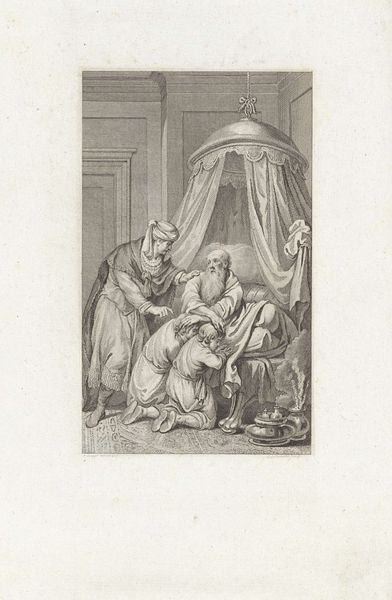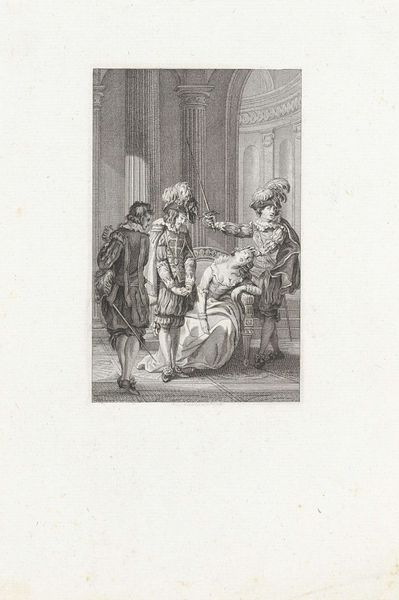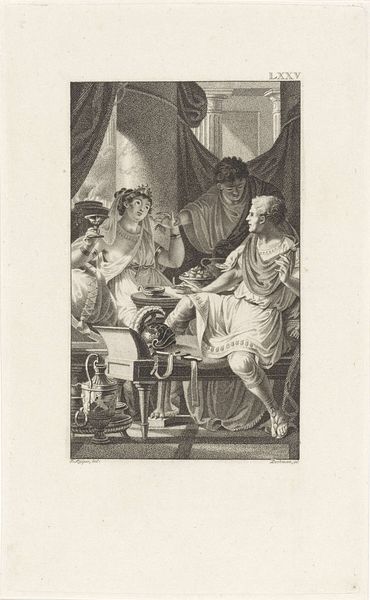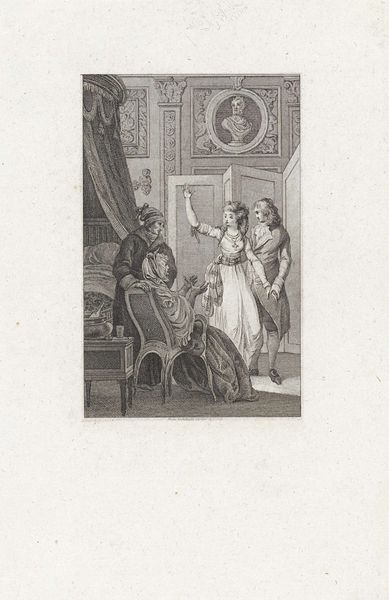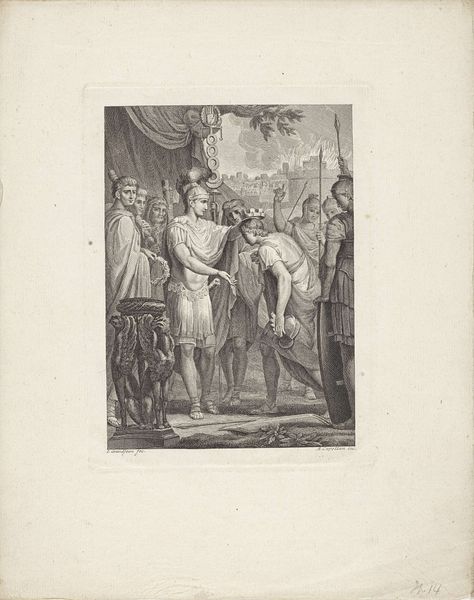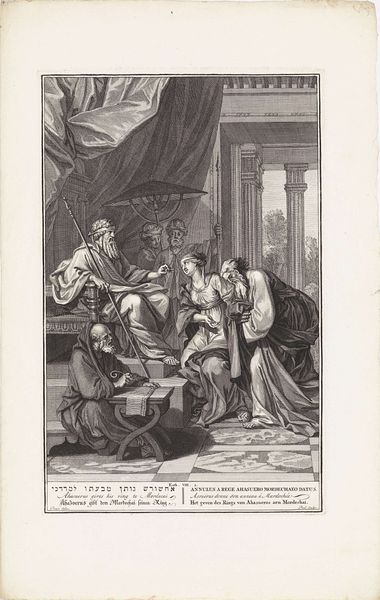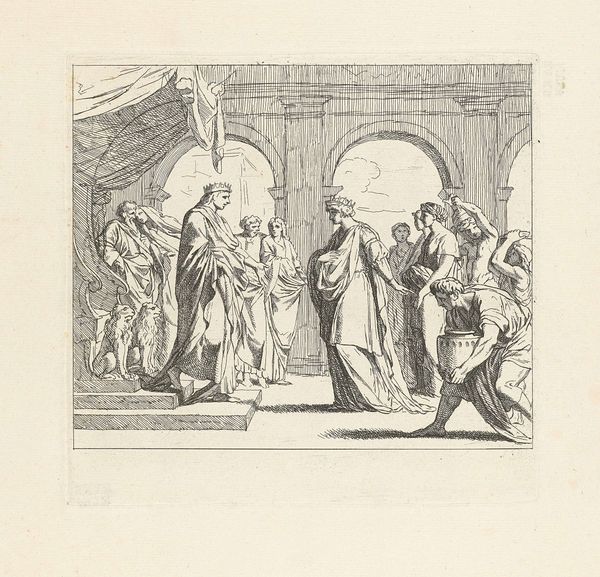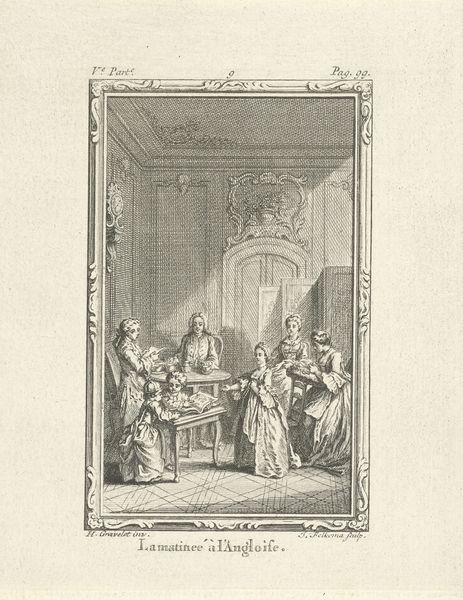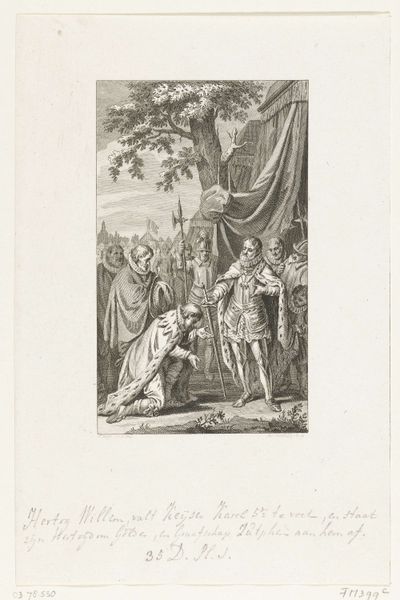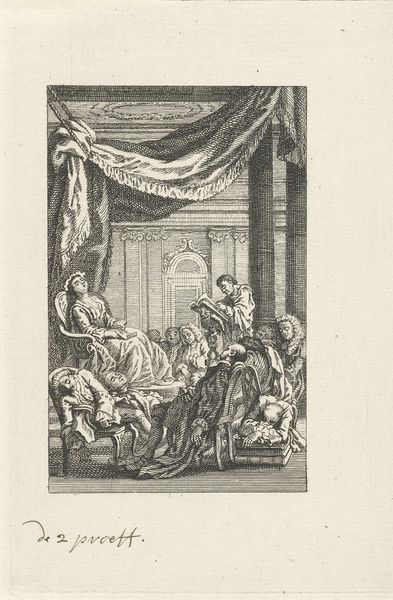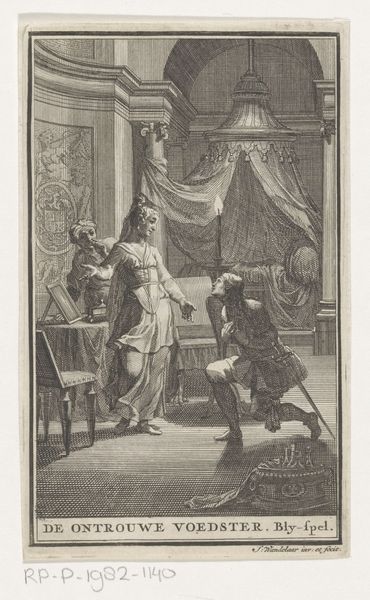
Gaius Fabricius weigert de geschenken van koning Pyrrhus 1794
0:00
0:00
print, engraving
#
neoclacissism
# print
#
old engraving style
#
figuration
#
history-painting
#
engraving
#
realism
Dimensions: height 219 mm, width 134 mm
Copyright: Rijks Museum: Open Domain
Ludwig Gottlieb Portman created this print depicting Gaius Fabricius refusing the gifts of King Pyrrhus, sometime in the late 18th or early 19th century. It shows a pivotal moment of Roman incorruptibility. But why this subject, and why then? The image revives a classical theme during a period of revolution and upheaval across Europe. Fabricius, known for his integrity, embodies republican virtues that resonated deeply with the political climate of the time. Note the elephant, a symbol of Pyrrhus’s military might and foreign luxury, standing behind the king's offer. Fabricius rejects not just the gifts but the implied submission to foreign power and corruption, a powerful statement in an era questioning the legitimacy of monarchies and empires. To fully appreciate this print, consider the era’s fascination with classical history as a mirror for contemporary political ideals. Research into the social and political uses of classical imagery in the late 18th century would reveal how artists like Portman engaged with and contributed to the revolutionary spirit of their time.
Comments
No comments
Be the first to comment and join the conversation on the ultimate creative platform.
